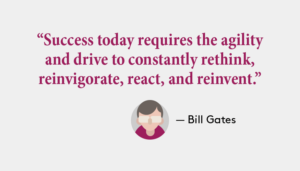There’s no doubt that advances in technology over the last 20 years have had a huge impact on how businesses are run. The internet, in particular, has changed the way modern offices work, allowing for a much more efficiently run environment and a greater level of flexibility.
But how much has the office really changed? Here we take a look at some of the components of an average office and how technology has changed them –
The office desk
The average office desk 20 years ago would have likely been jam-packed with all sorts of equipment and materials. You would probably find things like: Folders filled with paperwork, calculator, the phone book, stapler, post-it notes, Filofax, diary, dictionary, scissors, sticky tape, pens, notepad, telephone, and maybe even an atlas.
Whilst some of these items are still commonplace on some people’s desks, the truth is that technology has eliminated the need for an awful lot of items that would have previously cluttered up an office desk.
For example, Google has more or less made the phone book and the dictionary irrelevant; online calendars with built-in alerts and contact management have eliminated the need for diaries and filofaxes; email and instant chat means post-it notes are very rarely used; files are stored either on in-house servers or in the cloud; and everything is done electronically, so people don’t need to write things down so much. Even phone calls are now being handled with click-to-call technology and a headset.
Overall the office desk should (theoretically) be much cleaner and less cluttered, although this doesn’t always seem to be the case in our office!
Office hours
Another area of office life that’s changed significantly in the last 20 years is office hours. It used to be an accepted fact of life that office workers had a set 8 hour, 9-5 day. However the introduction of flexible working rights combined with cloud computing and high speed internet has meant that a growing number of businesses now offer flexible working hours to their staff.
In fact, according to a RSA & Vodafone report on flexible working, 77% of UK employees now work in organisations that have some kind of flexible working policy. The ability to work from anywhere at any time means that employees are able to continue working from home or while they’re out on site.
Overall, the added flexibility technology has provided means that employees are now able to better manage their work / life balance. However, has it also meant that we are now unable to switch off when we go home? As I say to my global customers and partners: “I’ll work any time, just not all the time” – though there is enough evidence to suggest we should try and keep to a regular working schedule that Germany is looking to ban or limit employer requirements to have access to emails after work hours.
Office duties
It’s hard to overstate how much technology has changed office duties over the last 20 years. Where staff would previously have been employed to type up field staff’s hand-written reports, this can now be done online immediately by the member of field staff while they’re actually still on site. By using a mobile device and a cloud solution, updates take place in real-time, often time dictated through voice recognition on your mobile phone.
Memos and other documents that would have been faxed or sent via intra-company mail can now be emailed immediately or even uploaded and collaborated on via a cloud solution. There used to be so much post to sort through, that it was someone’s job to sort it and deliver it. These days email and instant chat has meant that the amount of post has dramatically reduced.
Communication is now much easier, with Skype or GoToMeeting and other collaboration technologies enabling workers to connect with anyone across the globe instantly, fewer face-to-face meetings need to take place.
Overall, office life in most companies has changed dramatically in a relatively short amount of time, and this is mostly down to advances in technology that are accelerating each year.
NoBlue supplies cloud computing solutions that can make office processes much more streamlined and efficient. If you’d like more information about our services and how they can benefit your business, don’t hesitate to get in touch.
Has your office changed much over the last 20 years or does your desk still look like it did before the internet was invented? Let us know in the comments below.









